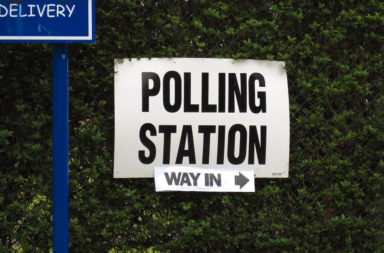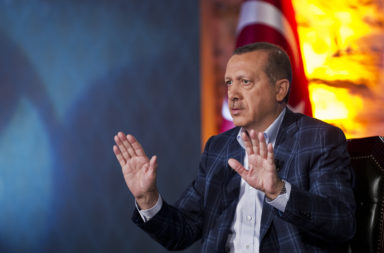“America will not be held hostage to nuclear blackmail,” President Donald Trump declared in his speech, justifying the withdrawal of the United States from the Iran nuclear deal earlier this month.
Trump emphasized that the deal “fails to address the regime’s development of ballistic missiles that could deliver nuclear warheads.”
One must acknowledge that important players have said that revising the deal is impossible, but one can contend that Trump’s concern about ballistic missiles doesn’t have to be the fatal flaw of the deal, often known as the JCPOA. Rather, a new agreement that limits Iranian nuclear capabilities at the same time as it curbs its ballistic missile program could be worked out, thus insuring that Iran will not be able to mount a “nuclear blackmail” of American – or European – cities.
A deal on missiles
The first thing to recognize is that a deal formalizing a restraint on Iran’s missile program in exchange for guaranteed sanctions relief would have many virtues.
First, it would forestall nuclear threats to most of Europe and all of the continental United States. It could also render unnecessary the planned deployment of missile defense interceptors in Poland. These interceptors are currently scheduled to become operational in 2020. Instead, these could be placed on a standby status.
Eventually, if the threat of Iranian missiles is eliminated, the missile defense program could be cancelled entirely. Such a step would save a considerable amount of money, which could be redirected to install more robust regional missile defenses such as THAAD in the Middle East. This would reassure U.S. allies, such as Saudi Arabia and Israel, which lie within reach of Iran’s short- and medium-range conventional missiles.
A commitment to defer the deployment of interceptors in Poland would also be welcomed in Russia, reducing that country’s motivations to deploy new nuclear weapon systems to penetrate or evade U.S. missile defenses. It could also help pave the way to a follow-on agreement to the New START, the latest strategic nuclear arms reduction agreements between the United States and Russia. A follow-on agreement is essential to maintaining momentum of nuclear arms control and non-proliferation. Deferring the installation of the missile defense interceptors could also provide an opening for the U.S. to initiate a dialogue to address Russian development of a cruise missile that violates the INF Treaty.
The elements of a new deal on missiles
So what would a revised deal look like?
Iran would need to agree not to flight test missiles with ranges exceeding 2,000 kilometres. Current Iranian missiles that exceed the limit would need to be verified as retired or modified.
Luckily, German, French and British foreign ministers, in concert with the EU’s foreign policy chief, Federica Mogherini, have already broached a discussion with Iran on limiting its ballistic missile program. Since Iran is mostly interested in deterring and responding to military threats in its neighbourhood, we believe it may be willing to give up development of missiles with ranges more than 2,000 kilometres if sufficient incentives are provided.
Iran has an ambitious space program agenda that once even had the goal of launching a man into space. Under any new agreement, legitimate Iranian space activities should still be permitted. Europe or Russia might offer guaranteed low-cost launch services in exchange for a suspension of Iranian space launch activities. In return, Iran may be asked to accept restrictions on its space activities, so that the space program cannot be used to obtain knowledge and technology that might aid in the development of ballistic missiles.
To be sure, Iranian leadership will be skeptical of any American promises now that Trump has pulled out of the JCPOA. One way to reassure them would be to seek ratification of the revised agreement in the U.S. Senate. In theory, that could make it more difficult – although, not impossible – for a future president to withdraw.
Revising the JCPOA won’t be easy. But the fact remains: If the world wants to bring Iran fully into the global economy, Iran needs America – and vice versa. That realization should be enough to bring both sides back to the negotiating table.




